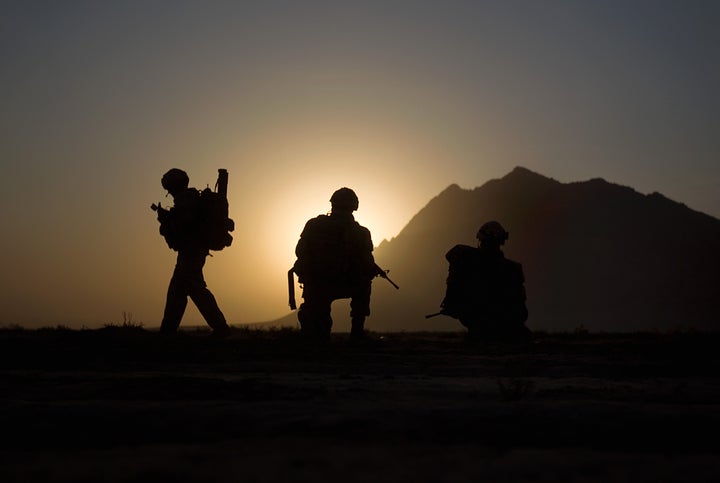
It's surprising to many that the majority of Pakistanis support the Islamists and their apologists as the saviors of their religion. But this didn't happen overnight. The mindset of the large segment of society didn't change with a blink of an eye.
No serious attempt has been made to analyse this phenomenon even though the transformation of Pakistani society over the last three decades points to this trend.
This new breed of Taliban supporter is overwhelmingly comprised of the upper-middle class that sprang up out of the villages or suburban areas thanks to the enormous flow of American cash that washed through the region after the Soviet occupation of Afghanistan, and later the U.S. invasion.
The corruption in foreign aid distribution, the secret funds for Afghan Mujahideen and the generous bounties to kill or capture extremists sent the price of real estate sky-rocketing in Pakistan, making the farmers living around big cities rich. Flush with cash, the newly rich farming class left rural life behind and moved to cities.
This is a major transformation in Pakistani society. Usually population shifts of this magnitude happen over an extended period of time. In Pakistan, it happened over two to three decades, drastically changing a social order that had been in place for almost two thousand years.
Around 322 b.c. a Mauryan ruler, Chandragupta Maurya and his successors expanded his power westwards across central and western India, enforcing principles of governance and laying down rules of administration, including tax collection, maintaining the army, completing irrigational projects, enforcing law and order, devising rates of taxation, and reviving the way of life in the cities and villages. Villages became so self-contained that travel became unnecessary.
The great Mauryan Empire ended in 185 b.c., but the system the King Ashoka put in place remained in place and for the most part untouched, even by the British rulers. Village life remained unchanged until the advent of new technologies. The introduction of mechanized farming and harvesting eased the arduousness of farm work and led to an increase in productivity. But on the other hand it rendered a big chunk of the society unemployed. The void created by idleness was filled with religion. New classes emerged, new rites were formed.
A similar phenomenon was occurring in India, but was somewhat countered by the development of industry. Residents of rural areas in search of jobs moved to cities, worked in factories and united under labor unions, forming a new working class fighting for equal rights and better opportunities. In Pakistan, however, attempts to build industry were interrupted time and again by dramatic swings from martial law to democracy and back again. Unstable governance rivalries among industrial barons also slowed or disrupted the building of an industrial worker class.
The segment of the new city dwellers brought with them the customs of village life, including myths, superstitions and family structure. The new urbanites were also largely uneducated and taken aback by the bustle of city life and the ways of residents whose worldview was shaped by modern conveniences. The overwhelming majority of these new city residents have become part of the new middle and/or upper middle class trying to fit into a Westernized lifestyle, but with poor results. It is this segment of the population that wants to drink alcohol and travel while at the same time supporting the Taliban as holy warriors. They do not want to let go of their old world values and virtues. They form the base of support for politicians like former cricket legend Imran Khan, whose confrontational attitude towards the West boosts their sense of patriotism.
These new urbanites would fall into one of two extreme categories. If the family had strong but backwards religious beliefs, they spent their money building a mosque or supporting religious organizations -- their own way of thanking the Almighty for their unexpected good fortune. If the family had cut its ties with such religious dogmas they chose instead to engage in conspicuous consumption -- purchasing high-priced houses, acquiring personal booze collections unmatched in most bars in the West, importing expensive cars and moving money to foreign banks. More important is what they didn't do with their new-found wealth: Reinvest the money into the local financial system.
The way out of this alarming state of affairs for Pakistan is to reform the education system that matches to the needs for the modern industrial era coupled with the formation and development of an industrial and manufacturing sector.
The vast majority of foreign aid provided by the international community is still being targeted at state security agencies, as is a disproportionately large percentage of the country's budget. The Saudi government discovered long ago that paying to mould the minds of the youth in Pakistan was an excellent investment. The results -- the rise of totalitarian Islam, contempt for democracy, romanticizing violent Islamist movements, and sectarian violence -- are all too evident. It's time for the West to become a counterbalance and seriously support civilian governments instead of relying on military dictators to further their agendas. The West should also keep on pressing the civilian administration for good governance if they want Pakistan free of extremists.